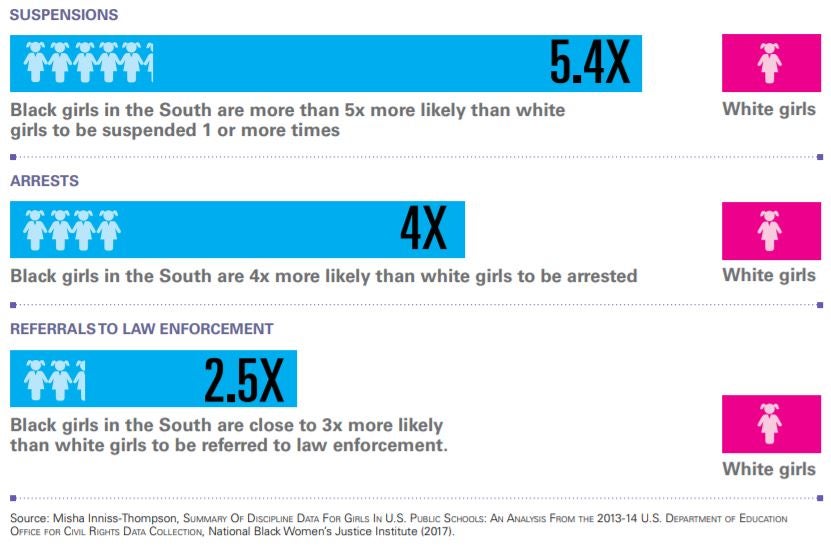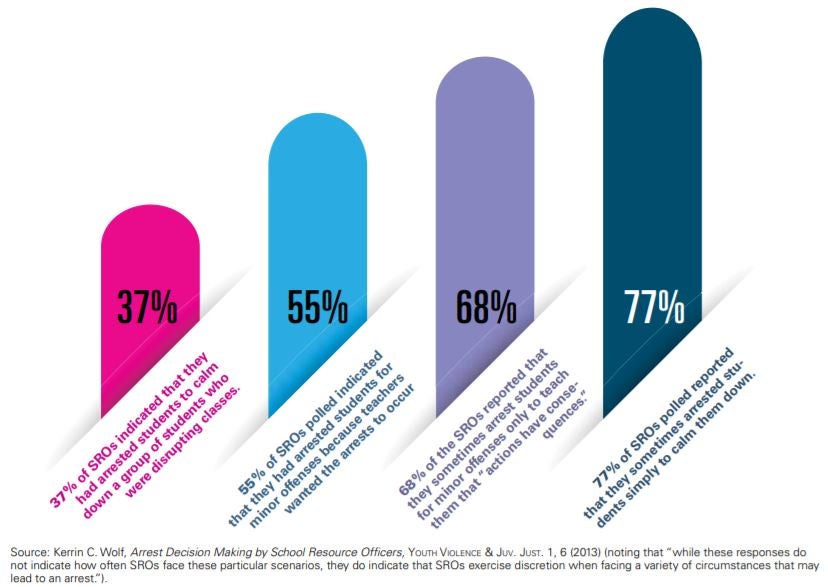Be Her Resource: A Toolkit About School Resource Officers and Girls of Color

Be Her Resource: A Toolkit About School Resource Officers and Girls of Color
This toolkit is the culmination of a collaborative research project in which the Initiative and the National Black Women’s Justice Institute gathered input from law enforcement and girls of color and provide guidance to improve interactions between them. The ultimate goal of the project was to reduce the disproportionate rate at which girls of color are drawn into the juvenile justice system.
DOWNLOAD BE HER RESOURCE TOOLKIT or read more below.
NOTE FROM THE AUTHORS:
This toolkit should not be misinterpreted as an endorsement of the need for police in our schools.
To the contrary, in a more ideal world — one in which schools implement a robust range of responses to students, especially those who exhibit symptoms of trauma — law enforcement would not be a consistent presence in schools, rendering reports like this one unnecessary.
Today, however, that presence is very real. The number of officers and the scope of their interventions in students’ lives has only increased, which has had a unique impact on girls of color. Given the current environment, we saw a need for a constructive research project that would gather input from law enforcement and girls of color and provide guidance to improve interactions between them, with the ultimate goal of reducing the disproportionate rate at which girls of color are drawn into the juvenile justice system.
School-based police officers, known as school resource officers (SROs), have become a common and growing presence in schools across the nation.The presence of law enforcement in school, while intended to increase school safety, has also been associated with increased surveillance and criminalization of students — especially students of color. Little data exists, however, on the experiences of girls of color.To fill this gap, the Georgetown Law Center on Poverty and Inequality and the National Black Women’s Justice Institute engaged in research to examine the relationship between girls of color and SROs.
This toolkit presents the findings that emerged from focus groups and interviews that we conducted with SROs and girls of color in the South, a region that is relatively unexamined in such research. They paint a complex portrait of interactions and relationships with unprecedented depth.

KEY FINDINGS INCLUDE:
- SROs described their most important function as ensuring safety and responding to criminal behavior, yet they report that educators routinely ask them to respond to disciplinary matters.
- SROs do not receive regular training or other supports specific to interactions with girls of color.
- SROs attempt to modify the behavior and appearance of girls of color to conform with mainstream cultural norms, urging them to act more “ladylike.”
- Girls of color primarily define the role of SROs as maintaining school safety. They define their sense of safety as being built on communication and positive, respectful relationships with SROs.
- African-American girls, in particular, identify racial bias as a factor in SROs’ decision-making process. African-American girls perceive that their racial identity negatively affects how SROs respond to them on campus.

KEY RECOMMENDATIONS FOR SCHOOL DISTRICTS AND POLICE DEPARTMENTS INCLUDE:
- Clearly delineate law enforcement roles and responsibilities in formal agreements
- Collect and review data that can be disaggregated by race and gender
- Implement non-punitive, trauma-informed responses to girls of color rather than increasing police presence
- If officers must remain in school, offer specialized training to officers as well as educators on race and gender bias and children’s mental health.